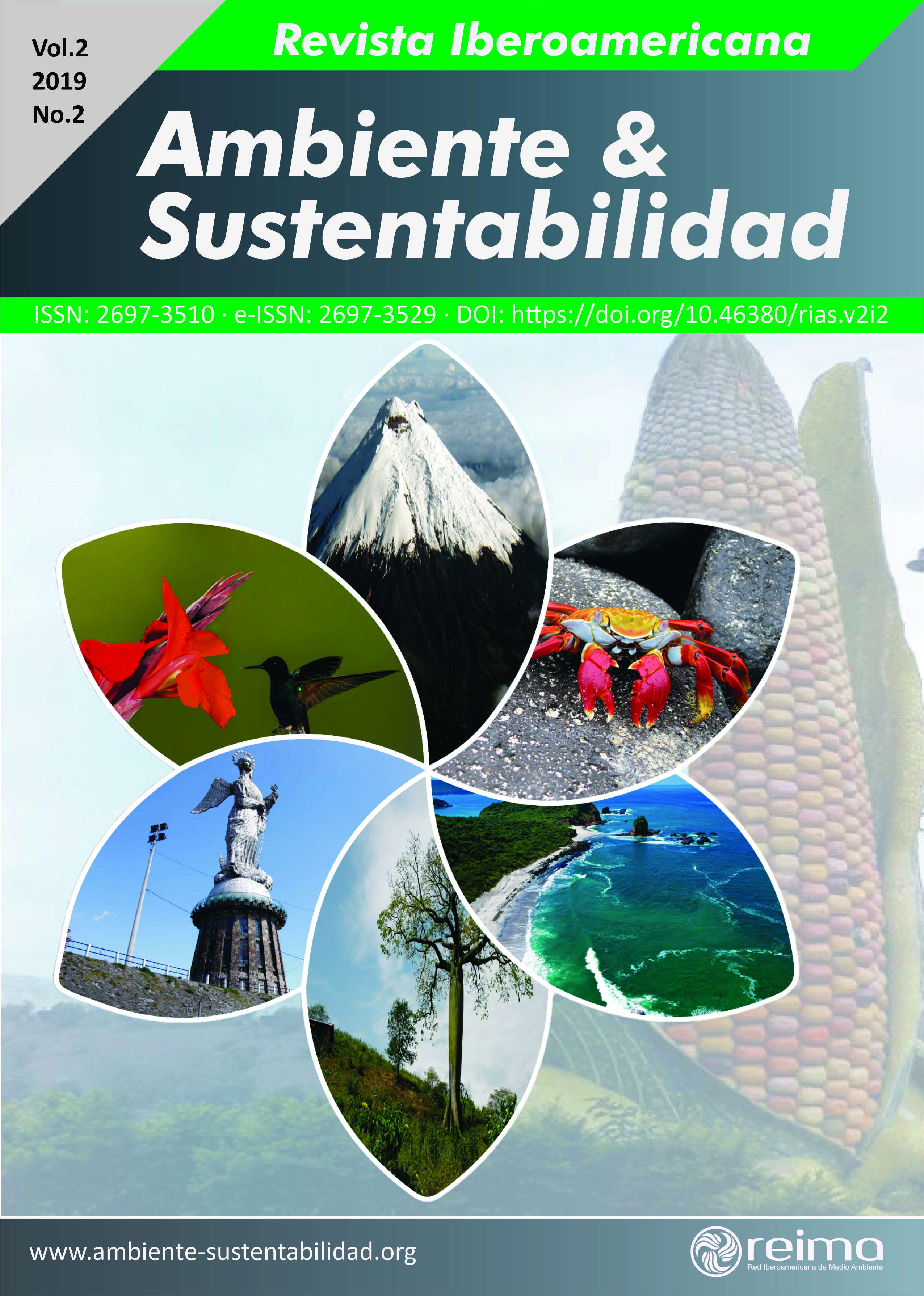Perceptions of visitors on the urban green areas of the city of Tulcán. Environmental educational implications.
DOI:
https://doi.org/10.46380/rias.v2i2.45Keywords:
green areas, urban sustainability, visitorsAbstract
Urban Green Areas (AVU) are guarantors of the quality of life of city dwellers. The sustainable management of these spaces must consider the characteristics of its users. The objective of the research was to determine the perception of visitors about the AVU of the city of Tulcán, province Carchi, Ecuador, in order to propose environmental educational orientations. A survey was applied to 180 visitors in 21 green areas of the city, following a non-probabilistic sampling of an intentional type. The information was recorded in a structured questionnaire that addressed the variables: Typology, characteristics of the visit, evaluation of services, perceived problems and proposed solutions. 67% of visitors are young adults who visit these spaces weekly (41%), to perform rest activities (46%) and sports (31%). The main means of transport used are on foot (53%) and bus (18%). Drinking water (42%) and sewage (43%) services are considered good. The problems they perceive are insecurity (47%), lack of infrastructure (33%) and lack of cleanliness (28%); 46% argue that these problems are caused by deficiencies in the municipal administration and the low environmental education of society (35%). The solutions focused on the implementation of awareness talks (48%) and increase in municipal (40%) and state investment (18%). The educational proposals, focused on the formal, non-formal and informal fields, are aimed at promoting the valuation of these spaces and the promotion of responsible behavior towards their use.
Downloads
Metrics
References
Bolaños, J.H. (2012). Plan estratégico de valoración turística para el manejo sustentable del cementerio Azaél Franco de la ciudad de Tulcán. Sathiri, 2, 60-70. https://doi.org/10.32645/13906925.209
Cabrales, L. (2002). El centro histórico de Morelia: gestión social y revaloración del patrimonio. Anales de Geografía de la Universidad Complutense, 22, 131–156. https://cutt.ly/8fczDqT
Castells, M. (2000). La Sociedad Red. (Trad. C. Martínez Gimeno). Alianza Editorial. https://n9.cl/omrp
Cerati, T.M. y Quiroz, A. (2016). Participación social en la gestión ambiental: estudio de caso en una unidad de conservación urbana en el municipio de São Paulo, Brasil. Estudios demográficos y urbanos, 31(1), 87-113. https://cutt.ly/yyPQivC
Dorigo, T.A. y Lamano-Ferreira, A.P. (2015). Contribuições da Percepção Ambiental de Frequentadores Sobre Praças e Parques no Brasil (2009-2013):Revisão Bibliográfica. Revista de Gestão Ambiental e Sustentabilidade, 4(3), 31-45. https://cutt.ly/lyPQfbq
Hernández, R., Fernández, C. y Baptista, P. (2010). Metodología de la investigación. McGraw-Hill. https://go.aws/2WZ668L
Instituto Nacional de Estadística y Censos. (2010). Resultados Censo 2010 de población y viviendaen el Ecuador. Fascículo Provincial Carchi. https://cutt.ly/ZyPQzpP
Orellana, G. (2016). Construcción de instrumentos de investigación en ciencias sociales.
Ornés, S. (2014). La gestión urbana sostenible: conceptos, rol del gobierno local y vinculación con el marketing urbano. Provincia, 31, 147-171. https://cutt.ly/iyPQEo6
Quintero, M. y Gómez, L. (2012). Del medio ambiente al espacio urbano. Ciudades latinoamericanas en la transición de ciudades difusas a ciudades compactas. Provincia, 27, 43-76. https://cutt.ly/KfczDK9
Downloads
Published
How to Cite
Issue
Section
License
Copyright (c) 2019 Santiago Andrés Santacruz Vallejo, José Alí Moncada Rangel

This work is licensed under a Creative Commons Attribution-NonCommercial-ShareAlike 4.0 International License.
This work is licensed under a Creative Commons Attribution-NonCommercial-ShareAlike 4.0 International License (CC BY-NC-SA 4.0)
© This license allows users to distribute, remix, adapt, and build upon the material in any medium or format, provided that attribution is granted to the creator.














